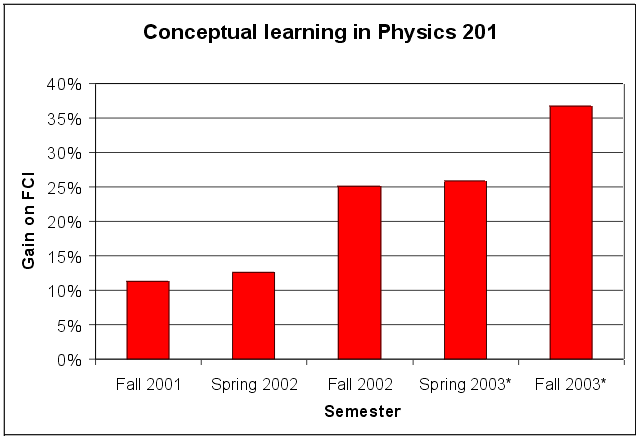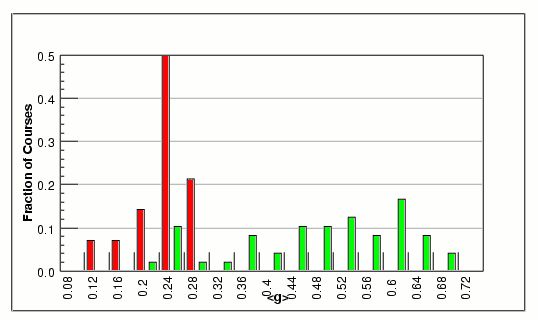Previous
Next |

Measured using the Force Concept Inventory (FCI)
-
The FCI is the most widely used standardized insturment
for measuring conceptual learning in introductory physics classrooms.
-
The gain on the FCI is a metric of improvement in
conceptual understanding during the course.
-
Hake showed traditional physics courses very ineffective.
More on FCI
The FCI is a 30-question, multiple choice test targeting misconceptions
related to force and motion developed by Hallouan and Hestenes. Example
question:
A large truck collides head-on with a small compact car. During
the collision:
-
the truck exerts a greater amount of force on the car than the car exerts
on the truck.
-
the car exerts a greater amount of force on the truck than the truck exerts
on the car.
-
neither exerts a force on the other, the car gets smashed simply because
it gets in the way of the truck.
-
the truck exerts a force on the car but the car does not exert a force
on the truck.
-
the truck exerts the same amount of force on the car as the car exerts
on the truck.
|
Gain on FCI
Test is given at beginning of semester and then at end.
The percent improvement (gain) is a metric of how student conceptual reasoning
has changed over the semester toward being consistant with accepted physics
understanding. It is calculated as:
|
<g> = |
<post-test> - <pre-test>
100% - <pre-test>
|
FCI and instructional methods
| Richard Hake collected FCI scores from a variety of introductory physics
courses at different institutions, both traditional lecture style (red)
and differen interactive-engagement courses (green). His data showed
gains on FCI ranging from 12% to 28% for traditional courses and from 20%
to nearly 70% for interactive courses. (From The American Journal
of Physics, v 66 n1, 1998, pp 64-74). |
 |
|

